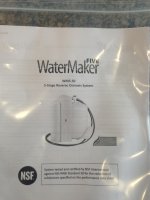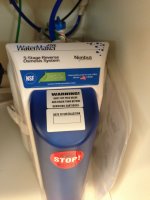dealcatcher
New member
We're considering buying an RO water filter and had several questions.
1) Are there any cons with getting an RO water filter? Is the water wastage really something to consider?
2) How much does it cost to install, labor only? (fyi, they would need to drill a hole into my Caesarstone countertop to mount the faucet)
3) Any contractors you can recommend for this?
4) Ideally, I'd want the filter to be hooked up before the water hits the fridge so we can utilize the water dispenser already built into the fridge. Is this possible? I read somewhere that the water pressure (post RO filter) may not be strong enough for the fridge.
5) Any recommended systems? I was thinking of going with one of the iSpring systems on Amazon (either 5 or 6 stage) that run between $170-210 or the Premier brand at Costco. Which one do you think is more effective and which one would be cheaper to maintain/replace filters in the long run?
Thanks for the advice!
1) Are there any cons with getting an RO water filter? Is the water wastage really something to consider?
2) How much does it cost to install, labor only? (fyi, they would need to drill a hole into my Caesarstone countertop to mount the faucet)
3) Any contractors you can recommend for this?
4) Ideally, I'd want the filter to be hooked up before the water hits the fridge so we can utilize the water dispenser already built into the fridge. Is this possible? I read somewhere that the water pressure (post RO filter) may not be strong enough for the fridge.
5) Any recommended systems? I was thinking of going with one of the iSpring systems on Amazon (either 5 or 6 stage) that run between $170-210 or the Premier brand at Costco. Which one do you think is more effective and which one would be cheaper to maintain/replace filters in the long run?
Thanks for the advice!


